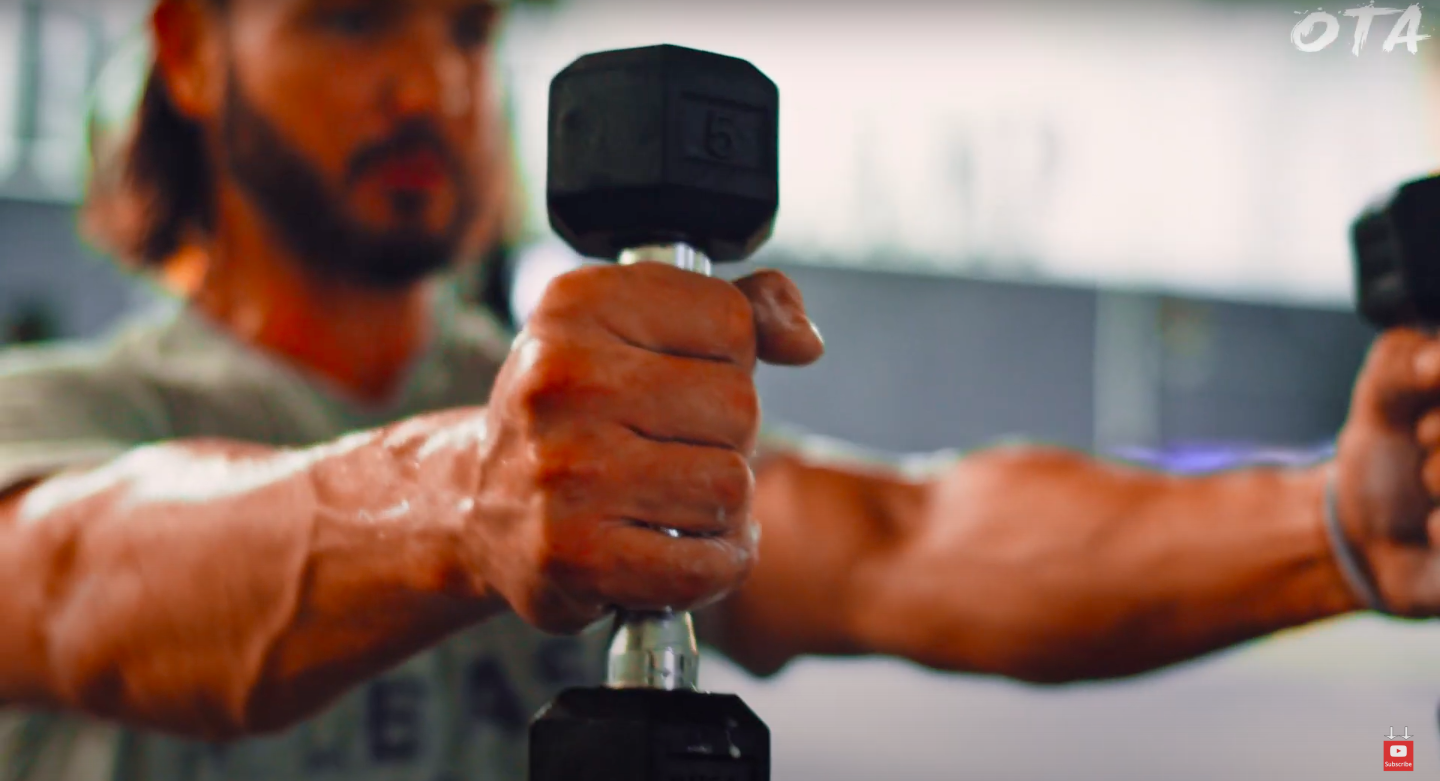In this guide to arm training for athletes, I’m going to take you through the exact process and programming we utilize at OTA to develop and grow the arms of our athletes.

One of the most common questions I receive is “How should I train for bigger looking arms?” Whether you play football, basketball, baseball, soccer, etc, your main focus is obviously on developing overall speed and power so that it transfers to your sport. However, I have many athletes looking to build and maintain aesthetic arms with developed shoulders, biceps, triceps and forearms.
That’s why today I’ll be breaking down the exact programming I use for functional arm training, that still develops the size. If you’re a bodybuilder or strength athlete, you may have a very different take on arm training but this approach focuses on function over musculature when it comes to arm training for athletes…
Arm Training For Athletes
The majority of our programs are based on a four-day split so we’ll be taking the same approach here. The foundational program I typically use with athletes is a 4 day/week split with two upper body, and two lower body days that you would usually stagger to look like this:
- Monday: Upper Body
- Tuesday: Lower Body
- Wednesday: Rest
- Thursday: Upper Body
- Friday: Lower Body
Here’s how I would go about coaching you through this training week…
Upper Body Day 1:
- Primary push / pull
- Lateral (supplemental shoulder work)
- Bicep / Tricep
Your primary movement on day one can be a combination of a horizontal push or pull and a vertical push or pull (alternating between each upper body day). This is followed by lateral and anterior shoulder work which can be something like front or lateral shoulder raises.
Upper Body Day 2:
- Primary push / pull
- Rear (supplemental shoulder work)
- Tricep / Bicep
Your primary movement on day two of your arm training will be the alternate of whatever horizontal push/pull and vertical push/pull you did on day 1. We’re also moving into a focus on rear or posterior shoulder work.
Biceps and Triceps:
Your bicep and tricep work should be a superset between arm flexion and extension. Typically the first movement will be heavier and help to induce a bit more stress. On day one you’ll go through a heavier bicep movement with an accessory tricep and on day two you’ll do the opposite with a heavier tricep movement with an accessory bicep exercise. Think about changing up your exercise to work a slightly different part of the muscle between day one and two. This helps to elicit slight differences depending on the specific muscle used!
 Full Body Split
Full Body Split
Another way that I might split up an athlete’s week of training is a 4 day total split. This is something I like to switch to later in the off-season where the athlete is moving back towards competition. During this time we want to mitigate some of the stress and focus on the intensity. This is also a period of time in which athletes tend to increase their skill. Rather than having whole days that focus on just lower or upper body, we’re hitting full body training each day, and changing up the upper body focus like the split below:
Day 1: Bicep
Day 2: Tricep
Day 3: Bicep
Day 4: Tricep
Parameters for Arm Training
As an athlete, your main focus is usually on things like power, speed and agility. Oftentimes when it comes to training the arms, its the last thing you’re focused on meaning they can often be overlooked or underperformed. Here’s a few ways you can continue to increase the intensity of your arm training:
- Early in the offseason, looking to add a little more volume: heavy, low volume movement (6-10 reps)
- Burn something out: immediately after that perform a light, high volume movement
- Eccentric: Add time under tension.
- High volume: 20 rep sets
If you want to get in an extra day of arm training during the week, I recommend taking your Wednesday completely off or just doing some light, active recovery. If you want to put in some extra work on the weekend however, try to get it in on a Saturday that way you still have Sunday completely off to recover before training on Monday. On that weekend session, avoid big compound movements and just hit some accessory work for shoulders, biceps, or triceps.
Keep in mind with all of this information that an athlete isn’t measured by how they look, but rather by how you play on the field or court. Watch the video below to see a few examples of how to incorporate specific movements into your arm training.
And if you’re really looking to take your game to the next level, I recommend joining hundreds of athletes from every sport – who made the decision to train with OTA.
We’ve recently opened our doors to accept new talent into my elite 1-on-1 coaching programwhere you can train like the best with:
- 100% Customized Training and Nutrition Programs
- Email and text support
- Access to OTA Exercise Database
- Unlimited Video Analysis
Are you ready to become an Elite Athlete?
 Full Body Split
Full Body Split